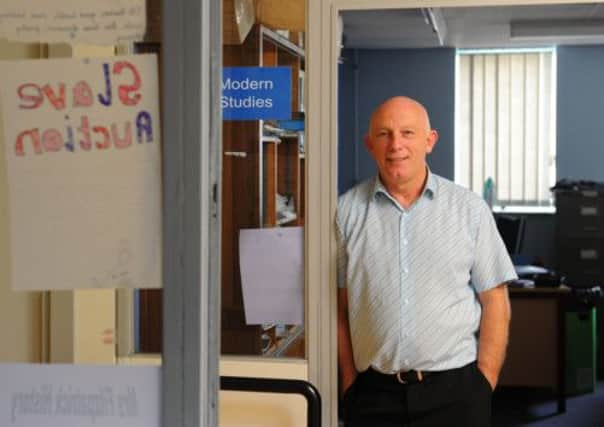Hugh Reilly: Weeding out the violent is paramount


It was revealed last weekend that a Glasgow teenager who had admitted the culpable homicide of a classmate in the school’s gymnasium attended a nearby comprehensive for three weeks while awaiting a custodial sentence. Pupils and parents were unaware of a convicted killer on the premises and only those teachers in direct contact with him were informed.
Under the law, Glasgow City Council had no option other than to continue to ensure the boy received an education. However, that legal obligation could have been met by either tutoring him at home or at another suitable off-site location. Thankfully, time spent at his temporary education establishment passed without incident but, in my view, the local authority was guilty of unnecessarily putting at risk the safety of pupils and staff.
Advertisement
Hide AdAdvertisement
Hide AdIt’s not as if local authorities haven’t experienced the financial pain of paying for what many would consider reckless endangerment of teachers and students. A former teacher colleague of mine received a six-figure sum when he was severely assaulted by a thug who had been expelled from a neighbouring secondary school for attacking a teacher. The teacher’s kindly headmaster had gone for the “clean slate approach”, thinking it proper not to disclose the ned’s aggressive urges lest judgmental staff adopted a negative perception of the youth.
The failure of those in power to act decisively when confronted with naked aggression is a cause of classroom casualties. I once took a knife from a lad who had brought it into my classroom. The rector suspended him for the maximum period allowable – six weeks – with a recommendation that the blade-carrier not be returned to the school.
The boy’s mother appealed the sanction, claiming that due to her son’s gang affiliation, his life would be in danger if he were to be taught outside his turf. Perhaps conscious that The Gang Boundary Commission would be unlikely to redraw battle lines to facilitate this young man’s attendance at an enemy-controlled school, the council caved in. After serving just 20 days, Mac the Knife was back in town, swaggering through the portals of his education asylum centre. A few weeks later, he punched a girl in the school corridor, fracturing her jaw. Only following this incident was he finally cast out of the school’s premises on a permanent basis.
To be fair, home schooling is often a difficult choice for an education directorate to make. For one thing, it’s expensive. With the average youngster studying eight subjects, paying half-a-dozen or more professionals to teach an individual child eats into an already trimmed budget. Also, given that the child is not averse to using his fists or weapons, finding teaching volunteers to sit in close proximity to such a lad can be a “challenging” task for the human resources department. In addition, the majority of these troubled kids come from broken homes. Carrying schoolbooks and walking into a home replete with adults who enjoyed a less than positive experience of school is not for the faint-hearted.
I once stepped up to the plate to teach an excitable boy who had previously crowned a chalkie with a plastic chair. Initially, the plan had been that I’d teach him in my room at the end of the school day. However, as a consequence of genuine fears that the mere sight of the bad ’un might be the catalyst for staff to spontaneously self-defenestrate, the venue for the rumble was switched to the local social work department. I’d been led to believe that a phalanx of social workers would be on hand to either drag the lad off me or transport me to A&E. Much to my discomfort, on my arrival a grinning departing social worker banged keys into my palm and told me to lock up when I’d finished.
There are no easy answers when it comes to how a council performs its duty of care to educate a violent youngster. In my opinion, putting a teenager with a background of violence into a mainstream school, even with precautionary measures in place, should occur only in exceptional circumstances. We need to talk about alternative education models for the tiny minority of youngsters who pose a threat to the welfare of the majority in our schools.